Almonds are a thermo-loving plant, which pleases not only with its beautiful flowering and pleasant aroma, but also the benefit of fruits. Sometimes in its excellent appearance during the flowering period, this culture can be compared with Japanese Sakura. So, at the end of May, the almond shoots are abundantly covered with beautiful pink flowers, on the spot where useful fruits are formed. Next, we consider what special characteristics has a shrub almond steppe and how to put it in his dacha.
Almond Steppe: Description
Almond steppe (otherwise "Bobulk") - a plant belonging to the family of pink. Today, almonds low steppe is grown mainly in Southeast Asia, in Central Europe. There it is cultivated on an industrial scale. Growing culture in lowlands, ravines, on the banks of the rivers.
The characteristics of the culture are as follows:
- Steppe almond grows in the form of a shrub, which in height does not exceed 1.2-1.5 m. Shrub shoots are covered with oval sheets, slightly oblong shape. Color leaves - rich dark green.
- The fruits of almond steppe have a warm sweet aroma. At the same time, they have a spicy taste, a slightly burning and sometimes bitter. Silmentants are usually more fragrant and saturated with taste than seeds themselves.
- The period of flowering culture is the end of April or the beginning of May. At this time, the shrub shoots are covered with beautiful gentle pink flowers, the aroma of which attracts bees.
- For full growth and development of culture requires bright sunlight and moisture. However, it is not necessary to overdo it with watering, since excessive moisture can cause the shrub root root.
- Almonds can be grown both in the country's country areas and in the gardens located within the city, as the culture tolerates smoke well, as well as can grow even on poor soils.
- Almond Saplings Steppe can be bought in a specialized store for summer residents, or "from hand".
- Fruit culture in September. At the same time, the fruits need to have time to collect before the onset of the first frosts.
Almond Steppe: Reproduction of Plants
The reproduction of the plant can pass with 3 methods:
- With the help of seeds.
- Cuttings (process).
- With the help of vaccination.
Speed \u200b\u200balmond steppe seeds most often. This method of reproduction of the plant is characterized by the following features:
- Previously before boarding the seeds pass the stratification procedure, which allows to increase the survival rate of young almond seedlings steppe. For this, the planting material is laid out on the tissue and transfer to the room where the temperature does not exceed 5 degrees Celsius. In such conditions, seeds should be left 10-14 days.
- Next, the seeds are planted in a pre-prepared container with soil. Deliver each of them to a depth of at least 6 cm.
- Next, the landing material requires a timely watering. Watering the soil follows at least 1-2 times every 10-14 days.
- After the first sprouts of almond appeared, the culture can be transplanted into open soil.
Almond grafting is carried out in the middle of the spring period. This procedure is performed in the following sequence:
- For reproduction, a small culture escape is suitable on which young kidneys have. It is perfectly cleaned from the leaves, then cut off the bark from the bottom.
- Next, a small incision is made in stock. The area around the outbreak is wiped with a clean cloth.
- Almond escape is placed in the incision and fasten it with the help of a patch.
- After 2-3 weeks, the ends of the plaster should be rejected so that the escape can independently strengthen the onset of the spring period.
Almond Steppe multiplies with cuttings in the following order:
- For reproduction, only cuttings are suitable, the size of which ranges from 18 to 22 cm. They must be "healthy", without visible defects. Two nodes must be present on the cutting tree. The cuttings are placed in a glass with water and leave so 10-15 hours.
- Next, the cutlets are transplanted into the soil consisting of two parts of the peat and one part of the river sand. In the container with soil cuttings should be 20-30 days.
- After the cuttings are rooted, it can be resettled into open ground.
Almond Steppe: landing
Plant landing at the end of April is carried out. Basic landing rules are as follows:
- A landing site should be well protected from strong wind and drafts. The sun's rays should be good at him, as almond grows quite poorly in the shade.
- Almonds can grow in poor soils, but if the soil enrich in potash fertilizers, the flowering of the shrub will be more abundant and beautiful.
- The soil on the plot should be drained to avoid moisture stagnation capable of damaging the root system of the plant. The thickness of the drainage layer should be at least 10-15 cm. Large river sand and crushed stone are suitable as drainage.
- In the soil, it is possible to make humus (100 gr. Horing by 1 m2 of soil).
Plant landing order:
- Pre-dig a pit for planting the plant. It should be deep enough to ensure the roots of the plant. Note that the distance between each landing well should be at least 1.5 meters, otherwise the scrubber shoots will interfere with each other.
- On the bottom of the dug holes are laid by a drainage layer (10-15 cm). For this, crushed stone is stirred with sand and fall asleep in the well.
- Next, the seedling neatly placed in the hole, straightening his roots. Then the root system is sprinkled with the earth so that the neck of the root remains outside.
- Next, under the root of the almond poured 5 liters of water.
- In order for the wind does not damage young seedlings, they can be tied up to a peg, which will serve as a support for them.
- Then the soil on the plot sprinkles a layer of mulch, which is perfectly suitable dry foliage and peat.
Almond Steppe: Care
Plant care activities are as follows:
- Almond loves moisture. However, as mentioned above, too frequent irrigation can cause the formation of rotes on the rhizome of the shrub. It should be watered not more often than 1 time in 6-8 days. At the same time, no more than 5 liters of water should be poured under each bush. During the flowering of shrub, watering should be carried out slightly more often, approximately 1 time in 5-6 days.
- On the plot where almond grows, it is possible to periodically loose soil. This will help to saturate the soil with oxygen. The loose layer should be at least 5-6 cm.
- As with any other plant, almond can interfere with the section of weed herbs, so they should be deleted in a timely manner.
- In the spring period, the soil on the site is mounted and fertilizes - for this, a mixture of superphosphate (20 gr) and potassium sulfate (20 grams) will fit.
- Every year in the spring period should be carried out a sanitary trimming of a shrub. For these purposes, yellowed and deformed shoots are deleted.
Almond: Properties and Applications
- Almond fruits are actively used in the preparation of various sauces, for example, the classic sauce of beachel or tomato sauce. In addition, the fruits of culture are added to pastries, salads and various soups. As for calorie content, 100 grams of fruits contain approximately 475 kilocalories.
- The use of almond is not limited to the production of spices. So, the fruits also receive essential oil. Moreover, both spice and this oil - they found today use in various fields, and in particular, in the perfumery industry, aromatherapy, cosmetology, cooking, food industry. Thanks to the special chemical composition, almond has some healing effect. At the same time, its painful, anti-inflammatory and vasodilant properties are mainly expressed.
- It is actively used in some national kitchens. In particular, in Italy, this spice is necessary when preparing vegetable stew, and in England, sliced \u200b\u200boranges sprinkle almonds. In Holland, fruits are used in the preparation of any pasta-based dish.
- The nutmeg contains a substance that has a positive effect affects secretion in the gastrointestinal tract. In addition, it improves his work. Almonds also possesses vasculating properties, it is able to remove spasms. In addition, fruits have anti-inflammatory action.
It is worth saying, almonds do not have pronounced therapeutic properties. Therefore, it is not used as an independent medicine in medicine. Nevertheless, its useful properties complement the action of the main components of some medical drugs.
Almond low steppe: disease and pests
The growth and development of almonds may interfere with the following diseases:
- Rust. It is characterized by the appearance of brown plaque on the shoots of shrub. To treat this ailment, it will be necessary to spray an affected shrub of a sulfur colloid suspension.
- Scab. It is characterized by the appearance of spots on foliage, buds and shrub shoots. To eliminate this disease, the shrub should be treated by the Bordeaux fluid.
- Moniliosis. As a result, the alend the fruits of almond begins to rot and fall. It is possible to cure a plant using fungicidal preparations - phytosporin-m, topaz.
- Swasteporiosis. It is characterized by the appearance of red and raspberry spots on the foliage and shoots of the shrub. It is possible to eliminate the disease using a spraying of a shrub using fungicidal preparations - phytoosporin-m, topaz.
Slap can be bought by some pests, which include:
- Aphid. Located on leaves and shoots of plants. You can get rid of parasites using infusion (10 gr) and potato tops (15 g).
- Mite. It is possible to cope with the parasite with the help of insectoacaricide drugs, such as Aktellik, Appolita, deteitin.

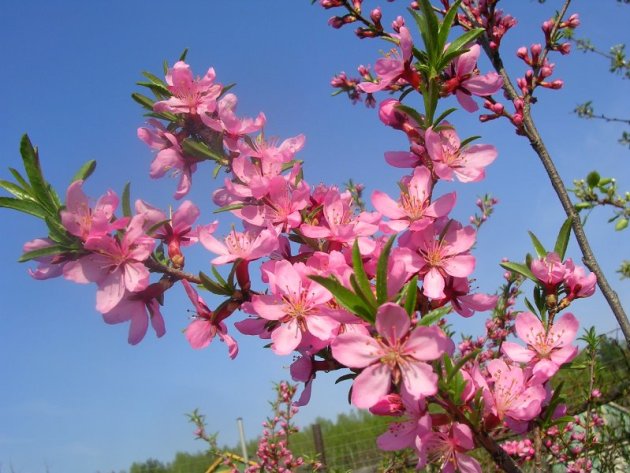
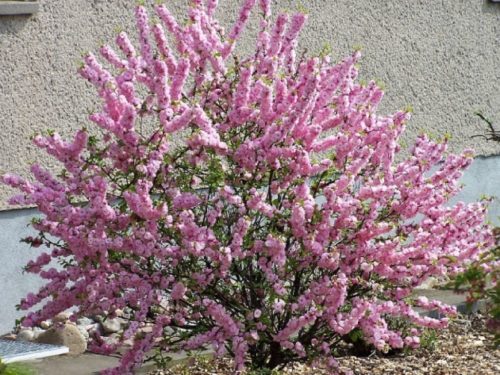
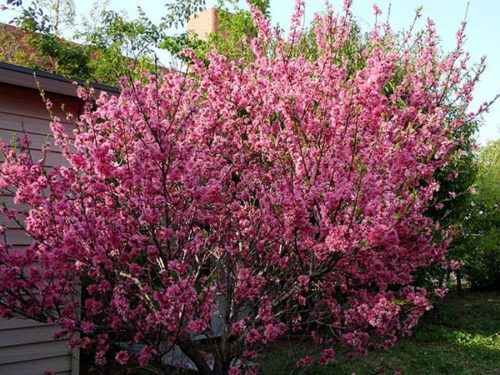
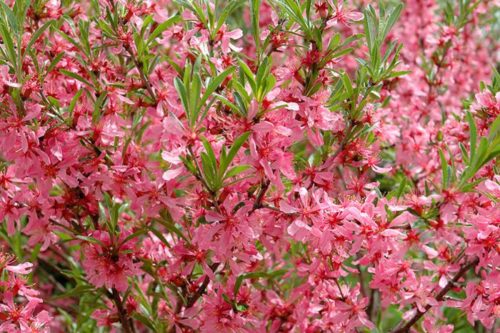
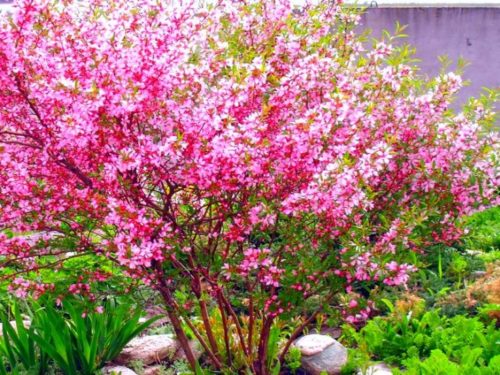
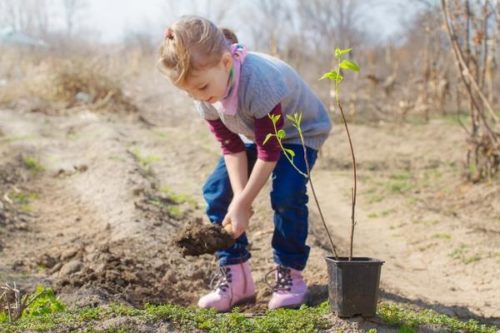
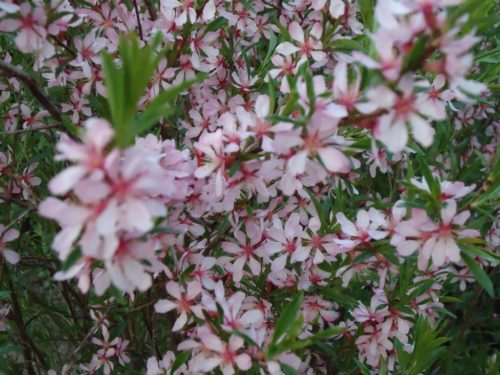
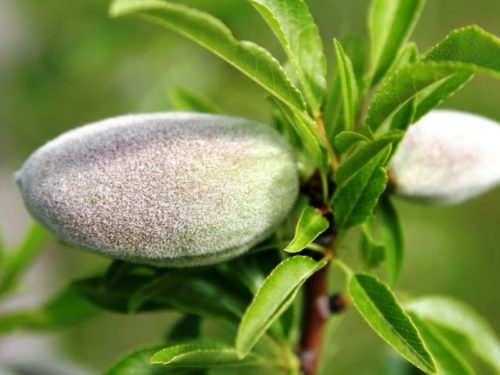
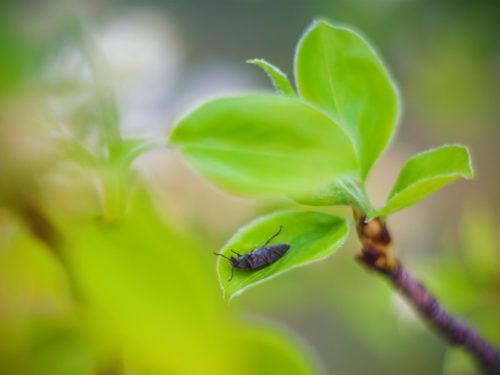
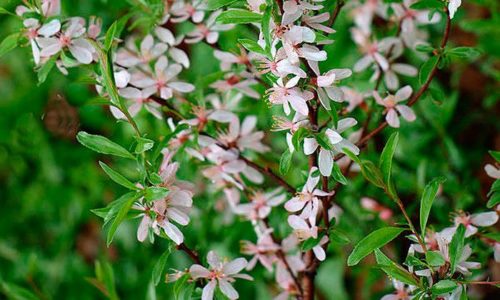
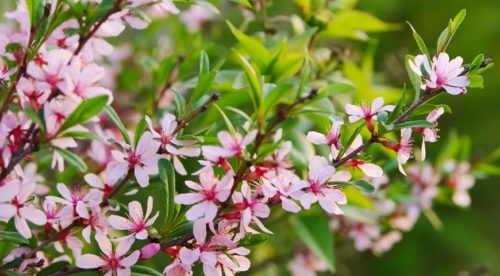
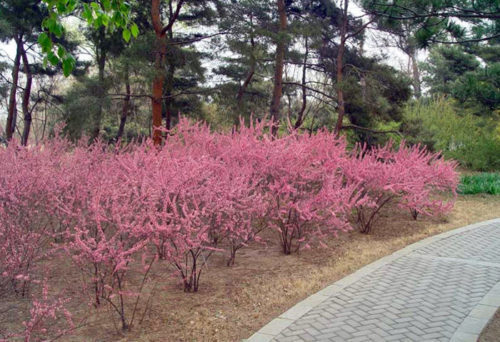
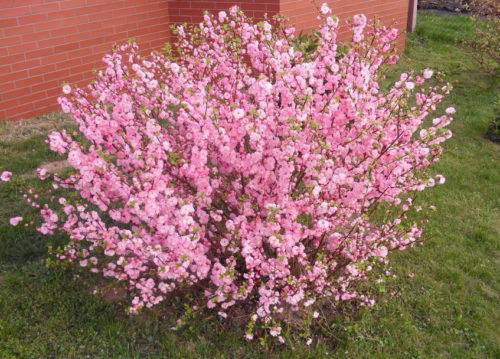












 Start a discussion ...
Start a discussion ...